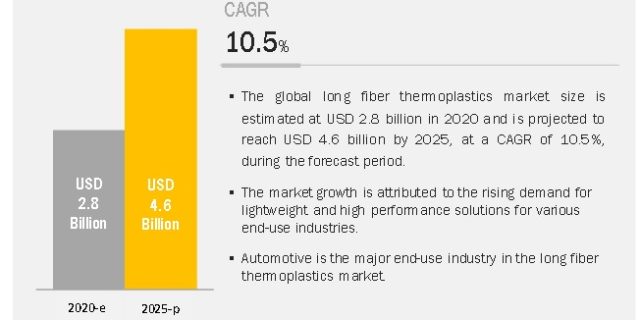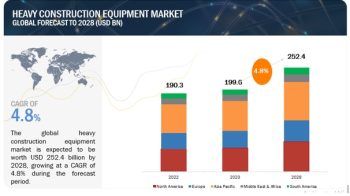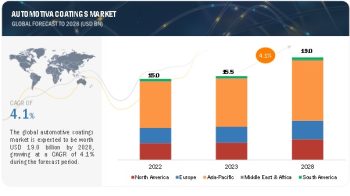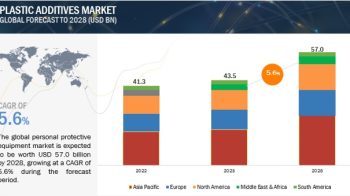
The report “Long Fiber Thermoplastics Market by Resin (PP, PA, PEEK, PPA), Fiber (Glass, Carbon), Manufacturing Process (Injection Molding, Pultrusion, D-LFT), End-use Industry (Automotive, Electrical & Electronics), Region – Global Forecast to 2025″ The global long fiber thermoplastics market size is expected to grow from USD 2.8 billion in 2020 to USD 4.6 billion by 2025, at a CAGR of 10.5%, during the forecast period. Owing to an increase in the demand for high-performance materials with properties, such as high strength-to-weight ratio, good tensile strength, and electrical conductivity, , the global long fiber thermoplastics market is expected to witness significant growth during the forecast period.
Browse 120 market data Tables and 54 Figures spread through 175 Pages and in-depth TOC on “Long Fiber Thermoplastics Market by Resin (PP, PA, PEEK, PPA), Fiber (Glass, Carbon), Manufacturing Process (Injection Molding, Pultrusion, D-LFT), End-use Industry (Automotive, Electrical & Electronics), Region – Global Forecast to 2025”
Download PDF Brochure https://www.marketsandmarkets.com/pdfdownloadNew.asp?id=143452466
PP resin comprises a major share of the long fiber thermoplastics market in terms of value and volume.
PP resin is a thermoplastic manufactured by combining propylene monomers. It is used in both consumer goods and industrial applications. Its unique properties and ability to adapt to various fabrication techniques make it a suitable material in a wide range of applications.
The injection molding process to account for the largest share in the global long fiber thermoplastics market during the forecast period in terms of value and volume.
Injection molding is a fast, high-volume, closed molding process that uses, most commonly, reinforced thermoplastics composites, such as nylon with chopped glass fiber. It is used for producing parts by injecting molten material into a mold. In this process, material for the part is fed into a heated barrel, mixed, and injected into a mold cavity. This process offers low-cost tooling, which is economical for low production volumes or for the production of large parts.
Glass fiber to have a significant market share in the global long fiber thermoplastics market during the forecast period.
Glass fiber is the most preferred and cost-effective reinforcement used for long fiber thermoplastics. Long glass fiber thermoplastic composites are manufactured through continuous filaments of fiber, which are melt-impregnated with thermoplastic polymer by the pultrusion process to create a high-performance bond. These are then cut into 1/2-inch (12 mm) composite pellets for convenient processing into net shapes via injection molding or extrusion processes. Glass fiber is commonly used as a reinforcing element in commercial and industrial composites.
The automotive end-use industry to account for the largest share in the global long fiber thermoplastics market during the forecast period in terms of value.
The strength-to-weight ratio of most of the long fiber thermoplastics is higher than that of steel and aluminum. The automotive industry needs to follow stringent regulations regarding fuel efficiency and weight reduction without compromising safety, performance, and processing efficiency. These requirements are fulfilled by the long fiber thermoplastics that provide material solutions for structural and semi-structural parts. They help in meeting requirements, such as weight reduction, structural performance, and maximum energy absorption. The manufacturing of cost-efficient parts and reliable mass production processes are enabled by the low processing cycle times of long fiber thermoplastics, which also increase their demand in the automotive industry.
Europe to account for the largest market share in the long fiber thermoplastics market during the forecast period.
Europe was the largest long fiber thermoplastics market, in terms of value, in 2019. The demand for these thermoplastics in automotive, electrical & electronics, and other industries is projected to improve due to product innovation and technological advances made in this sector. These factors drive the demand for long fiber thermoplastics during the forecast period.
Key players in the market include Celanese Corporation (US), SABIC (Saudi Arabia), Lanxess AG (Germany), BASF SE (Germany), Mitsubishi Chemical Holdings (Japan), PlastiComp Inc. (US), Daicel Polymer Ltd. (Japan), Asahi Kasei Corporation (Japan), RTP Company Inc. (US), and Solvay (Belgium).. These companies are involved in adopting various inorganic and organic strategies to increase their foothold in the long fiber thermoplastics market.


